The Tareq Rajab Museum
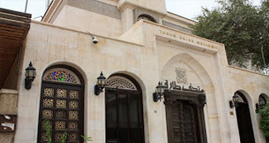 The Museum is a private collection of the Rajab family. The collection began during early 1950s and was open to general public during 1980. The Museum is divided into two sections. One deals with pottery, calligraphy, metalwork, wood, ivory, glass, and jade carvings of the Islamic world. Calligraphy is presented in a small room, showing picture from the Holy Quran.
The Museum is a private collection of the Rajab family. The collection began during early 1950s and was open to general public during 1980. The Museum is divided into two sections. One deals with pottery, calligraphy, metalwork, wood, ivory, glass, and jade carvings of the Islamic world. Calligraphy is presented in a small room, showing picture from the Holy Quran.
The Scientific Center
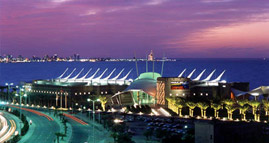 This is the largest Aquarium to be built by the Kuwait Foundation in the Middle East for Advancement of Sciences (KFAS). The visitors can focus on natural sea habitats, the coastal edges and desert of Arabian Peninsula, the motion picture of IMAX Theatre, and explore childhood skills in the Discovery Place, visit the Dhow Harbour, and relax at the Scientific Centre restaurant.
This is the largest Aquarium to be built by the Kuwait Foundation in the Middle East for Advancement of Sciences (KFAS). The visitors can focus on natural sea habitats, the coastal edges and desert of Arabian Peninsula, the motion picture of IMAX Theatre, and explore childhood skills in the Discovery Place, visit the Dhow Harbour, and relax at the Scientific Centre restaurant.
Sadu House
 The roots of Kuwait are associated with both the desert and the sea. The Bedouins lived a life governed by the rhythm of seasons. Sadu weaving, characterized by geometric designs woven by hand with dyed, spun and coloured wool, is a traditional craft of major importance.
The roots of Kuwait are associated with both the desert and the sea. The Bedouins lived a life governed by the rhythm of seasons. Sadu weaving, characterized by geometric designs woven by hand with dyed, spun and coloured wool, is a traditional craft of major importance.
Liberation Monuments
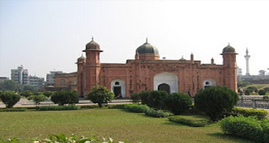 Al-Qurain House, situated in the Qurain housing area, is a site of bloody battle between Iraq and Kuwait, just before liberation, now converted into a museum, dedicated to those who laid down their lives. Even the Iraqi tank, mounted on the Jahra Gate, around the end of Fahd Al-Salem Street is a reminder of the folly of the war.
Al-Qurain House, situated in the Qurain housing area, is a site of bloody battle between Iraq and Kuwait, just before liberation, now converted into a museum, dedicated to those who laid down their lives. Even the Iraqi tank, mounted on the Jahra Gate, around the end of Fahd Al-Salem Street is a reminder of the folly of the war.
Kuwait Science Club
 Is situated on the sixth Ring Road and comprise a wide range of facilities and the latest scientific hardware including the Aujairy Observatory. The club aims to create a casual environment for people of all ages to develop their scientific knowledge and hobbies.
Is situated on the sixth Ring Road and comprise a wide range of facilities and the latest scientific hardware including the Aujairy Observatory. The club aims to create a casual environment for people of all ages to develop their scientific knowledge and hobbies.
Science and Natural History Museum
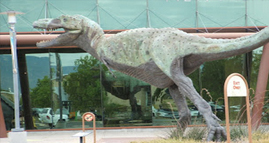 The museum houses displays pertaining to natural places and history, petroleum industry, machinery, aviation, space and zoology, electronics and consist of a health hall and a planetarium. The museum is located on the Abdullah Mubarak street, and, is open both morning and evenings from Saturday to Wednesday.
The museum houses displays pertaining to natural places and history, petroleum industry, machinery, aviation, space and zoology, electronics and consist of a health hall and a planetarium. The museum is located on the Abdullah Mubarak street, and, is open both morning and evenings from Saturday to Wednesday.
Entertainment City
 The city is being managed by the KTEC, and is located f20kms away from the Kuwait City near Doha, on the northern side of Kuwait Bay. The complex provides a complete range of amusements based on the theme of “Arab World”, “Future World”, and “the International World”.
The city is being managed by the KTEC, and is located f20kms away from the Kuwait City near Doha, on the northern side of Kuwait Bay. The complex provides a complete range of amusements based on the theme of “Arab World”, “Future World”, and “the International World”.
Failaka Island
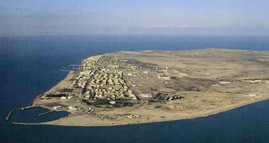 This beautiful island has only soldiers as its permanent residents, as it was once left devastated by the Gulf War. However, the visitors get to view the ruins from settlements of the Bronze Age Dilmuns and Hellenistic Greeks, who left many treasures from which, their past could be reconstructed.
This beautiful island has only soldiers as its permanent residents, as it was once left devastated by the Gulf War. However, the visitors get to view the ruins from settlements of the Bronze Age Dilmuns and Hellenistic Greeks, who left many treasures from which, their past could be reconstructed.
National Musuem
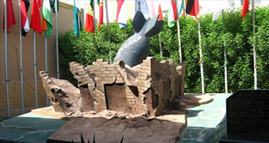 The Museum, location in close proximity to the National Assemble, comprises four buildings and a planetarium. Though, stripped and burnt by the Iraqi invaders, it houses the Al Sabah collection of Islamic art, the most comprehensive collections in the world.
The Museum, location in close proximity to the National Assemble, comprises four buildings and a planetarium. Though, stripped and burnt by the Iraqi invaders, it houses the Al Sabah collection of Islamic art, the most comprehensive collections in the world.
The Kuwait Towers
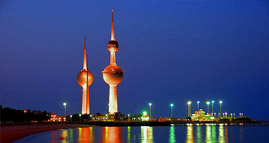 These are the most famous landmarks of Kuwait. The Kuwait Towers are situated on the Arabian Gulf Street in Dasman, promontory to east of City Center. The topmost sphere of the largest tower (187 meters in height), has a revolving observation area and a restaurant with access to high speed lifts. The middle tower comprises one million gallons of water.
These are the most famous landmarks of Kuwait. The Kuwait Towers are situated on the Arabian Gulf Street in Dasman, promontory to east of City Center. The topmost sphere of the largest tower (187 meters in height), has a revolving observation area and a restaurant with access to high speed lifts. The middle tower comprises one million gallons of water.
The Liberation Tower
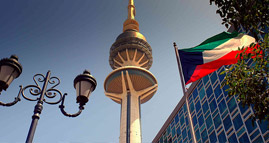 It represents Kuwaiti liberation, the sure sign of the country’s resurgence. It is one of tallest telecommunication towers in the world. The tower is 372 meters in height, and is 40 meters taller than the Eiffel Tower.
It represents Kuwaiti liberation, the sure sign of the country’s resurgence. It is one of tallest telecommunication towers in the world. The tower is 372 meters in height, and is 40 meters taller than the Eiffel Tower.
